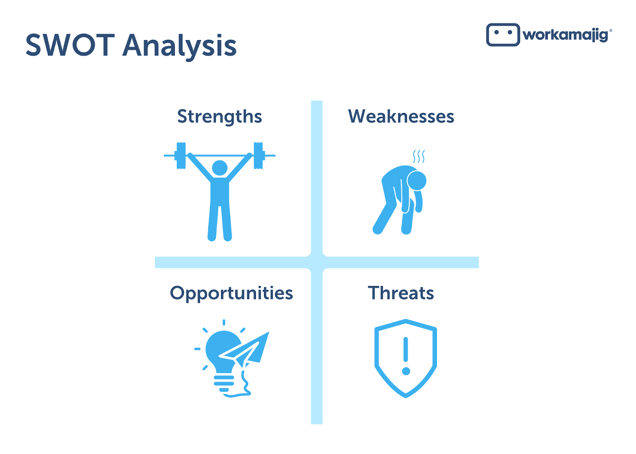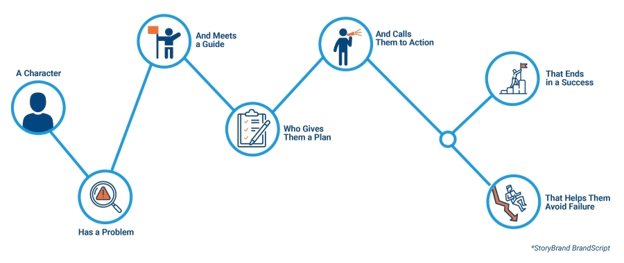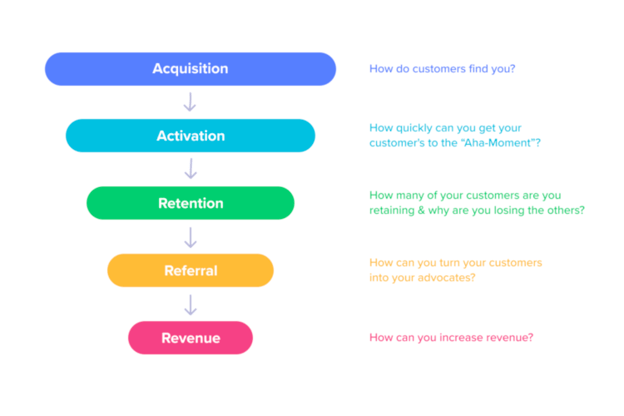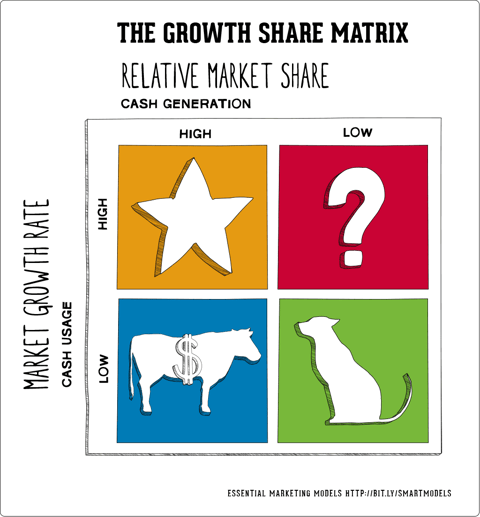Marketing, especially omnichannel or integrated marketing, can feel overwhelming at times. With so many tasks to accomplish and factors to consider, it's easy to get lost in the chaos. However, it's crucial to maintain focus in order to maximize resources and make informed decisions. This is where marketing frameworks come in.
In this article, we’ll be going over marketing frameworks you can use in several planning phases. By providing structure to the thought process and approach, these frameworks can help marketers navigate the complexity of omnichannel marketing with greater ease and effectiveness.
What Are Marketing Frameworks?
Marketing frameworks are essential tools that can help businesses and marketers streamline their marketing activities and make informed decisions. These frameworks add structure to the marketing process by breaking down complex strategies into smaller, manageable steps.
By doing so, marketers can easily visualize their decisions and marketing initiatives, which ultimately helps in setting clear goals, identifying target audiences, and selecting the most effective marketing channels.
Marketing frameworks put insights and strategy in a visual place, making it easier for marketers to share their plans with relevant stakeholders. With a clear visual representation of the marketing strategy, marketers can easily communicate their ideas to team members, executives, and other stakeholders who may not have a deep understanding of marketing concepts. This helps in ensuring that everyone is on the same page and working towards the same goals.
Marketing Environment Analysis Frameworks
Marketing environment analysis is a crucial component for any business that wants to succeed in the competitive market. It helps businesses understand their current market position, identify potential opportunities and threats, and develop effective marketing strategies.
Here are marketing environment analysis frameworks you can look into if you want to explore the external factors that could affect your marketing and business decisions.
Porter’s Five Forces
The Porter's Five Forces is a tool used to analyze the competitive environment of a business. It comprises five key factors that directly impact a company's ability to compete successfully in its industry. These include the threat of new entrants, bargaining power of customers, bargaining power of suppliers, threat of substitute products or services, and intensity of competitive rivalry.
The framework is particularly relevant in marketing environment analysis because it allows businesses to assess the overall attractiveness of their industry and identify areas where they may need to improve their competitive position.
For example, analyzing the five forces of Starbucks Coffee, it was found that competition, bargaining power of customers, and the threat of substitution are strong forces, while the other forces were weak to moderate. This affirms the importance of the company’s premium differentiation, warm service, and strong branding.
By assessing external factors, you can develop a better understanding of your competitive environment and identify potential opportunities and threats.
SWOT Analysis

SWOT analysis is a strategic planning tool that helps businesses identify their strengths, weaknesses, opportunities, and threats. (This is what SWOT stands for.)
This marketing framework can help you identify your business’s strengths and weaknesses by analyzing its internal environment (such as the company's resources, capabilities, and processes). The analysis of external factors (such as market trends, competition, and regulatory changes) can help you identify opportunities and threats.
By understanding these factors, you can develop strategies to capitalize on your strengths and opportunities while mitigating their weaknesses and threats.
STP Framework
STP stands for segmentation, targeting, and positioning.
Segmentation precedes targeting. It is the process of dividing a larger market into smaller groups of customers with similar needs and characteristics. Targeting involves selecting the most attractive segments to focus on based on factors such as size, growth potential, and competition. Lastly, positioning is the process of creating a unique image and identity for a product or service in the minds of customers.
The STP marketing framework is extremely relevant in marketing environment analysis as it helps companies to better understand their target audience. This is crucial because the centerpiece of the marketing environment analysis framework is the consumer. Because of this, marketers can tailor their marketing efforts accordingly.
Marketing Campaign Framework
When planning a marketing campaign, it's crucial to consider the big picture and how each component of the campaign fits into the overall strategy. This is where the marketing campaign frameworks (which can also be considered as big-picture marketing frameworks) come in.
By utilizing these frameworks, you can ensure that every aspect of your campaign is aligned with your overall goals and objectives.
Customer Journey Mapping
Customer journey mapping is a visual representation of the entire experience that a customer goes through when interacting with a brand. This process allows marketers to identify all the touchpoints where a customer interacts with the brand, from the initial awareness stage to the final purchase.

Source: CRM Software Blog
By understanding the various stages of the customer journey, marketing professionals can gain valuable insights that can help them plan effective campaigns that are tailored to meet the specific needs of their target audience.
Doing a customer journey is an excellent way to ensure that all marketing efforts are aligned with the overall goals of the company. This framework enables marketers to view marketing activities from a holistic perspective and helps them identify opportunities for optimization and growth.
It also allows marketers to identify areas where customers may be experiencing pain points or dissatisfaction. Armed with this information, marketers can create targeted campaigns that address these issues, thereby improving customer satisfaction and loyalty.
ICE Score
The ICE Score framework stands for Impact, Confidence, and Ease. It is designed to help marketers prioritize their ideas and initiatives based on these three factors.
- What impact will this effort make?
- How confident are we in pulling it off?
- How much time, money, and effort will it require?
Impact refers to the potential impact that a campaign or initiative could have on the business. This includes factors such as revenue, customer satisfaction, and brand reputation.
Confidence relates to how confident marketers are in their ability to execute a campaign successfully. This includes factors such as available resources, team expertise, and market conditions.
Ease refers to how easy it will be to execute a campaign. This includes factors such as time, cost, and complexity. The ICE Score framework helps marketers identify which initiatives will
have the most significant impact, which they are most confident in executing successfully, and which will be easiest to implement. This can help you prioritize your ideas and allocate your resources effectively, ultimately leading to more successful campaigns and better business outcomes.
Marketing Messaging Framework
The marketing messaging framework plays a crucial role in developing an effective marketing communication strategy. It provides a structured approach to creating consistent and compelling messaging across all channels.
Without a framework, marketing messages can become disjointed, confusing, and less effective. Using a marketing messaging framework ensures that the messaging is aligned with the brand's overall strategy and objectives. It also provides guidelines for creating messaging that resonates with the audience and differentiates the brand from its competitors.
Brandscript
The BrandScript Marketing Messaging Framework is a powerful tool from StoryBrand that can help businesses develop a clear and compelling marketing communication strategy framework.

Source: AXIA Public Relations
This framework is designed to help businesses create a messaging framework that clearly communicates their unique value proposition to their target audience. It is based on the principle that effective communication starts with a clear understanding of your target audience's needs, wants, and desires.
The BrandScript Marketing Messaging Framework consists of several steps, each of which is designed to help businesses create a messaging framework that resonates with their target audience.
By following these steps, businesses can create a messaging framework that speaks directly to their target audience and addresses their pain points. This can help businesses differentiate themselves from their competitors and position themselves as the solution to their customers' problems.
AIDA
AIDA stands for Attention, Interest, Desire, and Action. The AIDA marketing messaging framework is a widely used marketing communication strategy framework that helps businesses create effective marketing messages to reach their target audience.
The framework offers a clear understanding of how customers move through the decision-making process and helps businesses create messaging that resonates with them at each stage.
The first step in the AIDA framework is to grab the attention of the target audience with a compelling headline or visual. Once attention is captured, the next step is to generate interest by highlighting the benefits of the product or service. The third step is to create desire by showing how the product or service can satisfy a want or need. Finally, the call to action prompts the audience to take a specific action, such as making a purchase or signing up for a newsletter.
Digital Marketing Frameworks
In today's fast-paced world, digital marketing has become an essential tool for businesses to reach their target audience. However, creating a digital marketing strategy requires a systematic approach. This is where digital marketing strategy frameworks come into play.
Pirate Metrics (AARRR)
Pirate Metrics, also known as AARRR, is a digital marketing strategy framework developed by Dave McClure. This framework is based on five key metrics that businesses should focus on to measure their success. These metrics are Acquisition, Activation, Retention, Referral, and Revenue. Pirate Metrics can be used to evaluate the performance of a digital marketing campaign and identify areas where improvements can be made.

Source: Paldesk
Acquisition refers to the number of visitors who come to a website or app. Activation measures the number of visitors who take a desired action, such as signing up for a newsletter or creating an account. Retention measures how many visitors return to a website or app over time. Referral measures how many visitors refer others to the site or product. Lastly, revenue measures how much money is generated from the website or app.
By using Pirate Metrics, businesses can identify which stage of the funnel they need to focus on to improve their digital marketing strategy. For example, if a business is struggling with retention, they can work to improve customer loyalty and engagement. If revenue is low, they can focus on improving their sales funnel or pricing strategy.
Hook Model
The Hook Model is a framework developed by Nir Eyal, a renowned author, and expert in consumer behavior, to understand and influence user behavior.

Image from “Hooked: How to Build Habit-Forming Products” by Nir Eyal
This model is widely used in digital marketing planning to create engaging products and services that keep customers coming back for more. The Hook Model consists of four stages: Trigger, Action, Variable Reward, and Investment.
The Hook Model can help you understand your customers' needs and preferences by creating a seamless experience. In fact, it has been used successfully by many companies, including social media platforms like Facebook and Instagram, to keep users engaged and coming back for more.
The Trigger stage is all about grabbing your customer's attention and prompting them to take action. The Action stage involves making the process of using your product or service easy and intuitive. The Variable Reward stage involves providing customers with rewards that are unpredictable yet desirable. Lastly, the Investment stage involves getting your customers to invest time, money, or effort into your product or service.
Content Marketing Framework
Content marketing strategy frameworks are essential tools for businesses to achieve their marketing goals. It provides a systematic approach to planning and executing content marketing campaigns.
This is important because consumers are becoming increasingly discerning about the content they consume. With so much information available online, you will need to create content that stands out from the crowd. Content marketing strategy frameworks provide a structured approach to creating content that is tailored to the needs of your target audience.
They Ask You Answer
The They Ask You Answer framework is a content marketing strategy framework that focuses on providing valuable information to the target audience. By answering the most common questions that customers have, businesses can establish themselves as experts in their industry and build trust with their audience.
This framework emphasizes the importance of transparency and honesty in content creation, as it encourages businesses to address any potential concerns or negative aspects of their products or services.
By identifying the questions that customers are asking and providing helpful answers, businesses can attract more traffic to their websites and increase their conversion rates. Additionally, this framework can help businesses establish themselves as thought leaders in their industry, which can lead to increased brand recognition and customer loyalty.
Inbound Marketing Sales Funnel
The inbound marketing sales funnel framework is a comprehensive strategy that helps businesses attract, engage, and convert potential customers. It involves four stages - Attract, Engage (Convert And Close), and Delight.

Source: Hubspot
At the top of the funnel, the focus is on attracting visitors to your website through various content marketing tactics. The aim is to provide valuable information that solves their problems and builds trust in your brand.
In the Convert stage, the focus shifts to capturing leads by offering them something of value in exchange for their contact information. This could be a free ebook, webinar, or consultation.
Once you have their details, you can move on to the Close stage where you nurture them with relevant content that helps them make a buying decision.
Finally, the Delight stage is all about providing exceptional customer service to turn your customers into brand advocates.
This framework is an excellent way to automate the sales process and create a successful content marketing strategy that aligns with your business goals.
Product Marketing Frameworks
Product marketing frameworks are a set of guidelines that help businesses to develop a successful product marketing strategy. These frameworks typically include various components such as market research, target audience identification, product positioning, and messaging.
7 Ps of Marketing
The 7Ps of marketing is a product marketing framework that includes seven key elements that businesses use to develop and promote their products or services. The seven Ps are product, price, promotion, place, people, process, and physical evidence.
The 7Ps framework can help you develop a deeper understanding of your target market and create a product that meets their needs and wants.
- Product: Identity what features and benefits your product should have
- Price: Set an appropriate price that is in line with the value that your product offers
- Promotion: Create a comprehensive marketing plan that includes advertising, public relations, and other promotional activities
- Place: Identify where the target market is most likely to buy the product
- People: Focus on employees who will be involved in the marketing and sales of your product
- Process: Identify how you will deliver your products or services to customers
- Physical evidence: Tangible aspects of the product that customers can see or touch
By considering each of these elements, businesses can create a more effective marketing strategy that aligns with their overall business goals.
Pragmatic Marketing Framework
The Pragmatic Marketing Framework is a proven methodology for product marketing that helps companies create and promote products that meet the needs of their target customers.
The framework consists of several key steps, including market research to identify the needs and preferences of your target customers, product management to oversee the development of your product from concept to launch, and product marketing to ensure that your product is effectively promoted to your target audience. The framework also includes pricing strategies, sales enablement, and customer engagement to ensure that your product is successful in the market.
Whether you're a startup or an established company looking to launch a new product, the Pragmatic Marketing Framework can help ensure your success in the market.
Growth Marketing Frameworks
In today's highly competitive business landscape, it's crucial for companies to adopt effective marketing strategies to drive growth and profitability. This is where growth marketing frameworks come into play.
Growth marketing frameworks help businesses to prioritize marketing efforts based on data-driven insights, rather than guesswork or assumptions and helps ensure that resources are being utilized efficiently and effectively. They also provide a structured approach to experimentation and testing, which helps businesses to identify and implement the most effective tactics for driving growth.
Growth-Share Matrix
A growth-share matrix is a strategic tool developed by the Boston Consulting Group in the 1970s to help companies analyze their product portfolio and allocate resources effectively.

Source: Smart Insights
It categorizes products into four quadrants based on their market growth rate and relative market share: cash cows, dogs, question marks, and stars.
This matrix is a useful framework for growth marketing because it allows businesses to identify which products have the most potential for growth and which ones may need to be phased out or repositioned.
|
Star |
|
|
Question Mark |
|
|
Cash Cow |
|
|
Dog |
|
By categorizing products based on market growth rate and market share, businesses can identify which products are most likely to generate revenue and profit and allocate their resources accordingly. This framework can be used in conjunction with other growth marketing strategies to create a comprehensive plan for long-term success.
Ansoff Matrix
Growth marketing is centered around rapid experimentation and failure, aiming to add value throughout the entire marketing funnel. A helpful tool to evaluate growth opportunities is the Ansoff Matrix, which outlines four major growth strategies: market penetration, market development, product development, and diversification.

Source: Smart Insights
Market penetration is the least risky, while diversification is the riskiest strategy. The goal of market penetration is to increase product sales, including existing customers and new customers within existing markets. Market development involves taking existing products into new markets.
The Ansoff Matrix can be particularly useful in showing how to encourage existing customers to buy from a company rather than shopping elsewhere.
How To Choose The Best Marketing Framework
Marketing planning and strategy are essential components for any organization's success. To choose the best marketing framework, it is crucial to understand your organization's goals and the role that marketing plays in achieving them.
Additionally, assessing your available resources to implement the framework is necessary. As highlighted in recent research studies, ample resources are essential for implementing marketing plans and strategies effectively.
Finally, understanding what matters most to your key stakeholders is vital in selecting a marketing framework that resonates with them. Therefore, organizations need to assess their resources and understand their goals and stakeholders' needs to choose the right marketing framework for their brand's success.
Wrapping Up
Marketing frameworks have become increasingly important in recent years, as companies strive to streamline their marketing efforts and achieve greater success. There are several different types of marketing frameworks available, each with its unique benefits and advantages.
Choosing the best marketing framework for your business depends on your specific needs and objectives. It can improve the overall marketing strategy, keep everyone focused and on the same page, and create a home for all the templates, guides, tools, and assets that make up the marketing strategy. Coupled with a powerful marketing project management tool like Workamajig, you can be sure that you’re pairing an effective strategy with efficient execution.
Using marketing frameworks can help you clarify your messaging and execute your campaigns with greater precision and efficiency, leading to greater success in your marketing efforts.
Related reads:
- Best Marketing Operations Management Software
- Marketing Agency Software: Best Tools to Build Your Tech Stack
- 10 Actionable, Practical Tips to Increase Agency Profits (+ FAQs)
Originally published 5/11/23.

